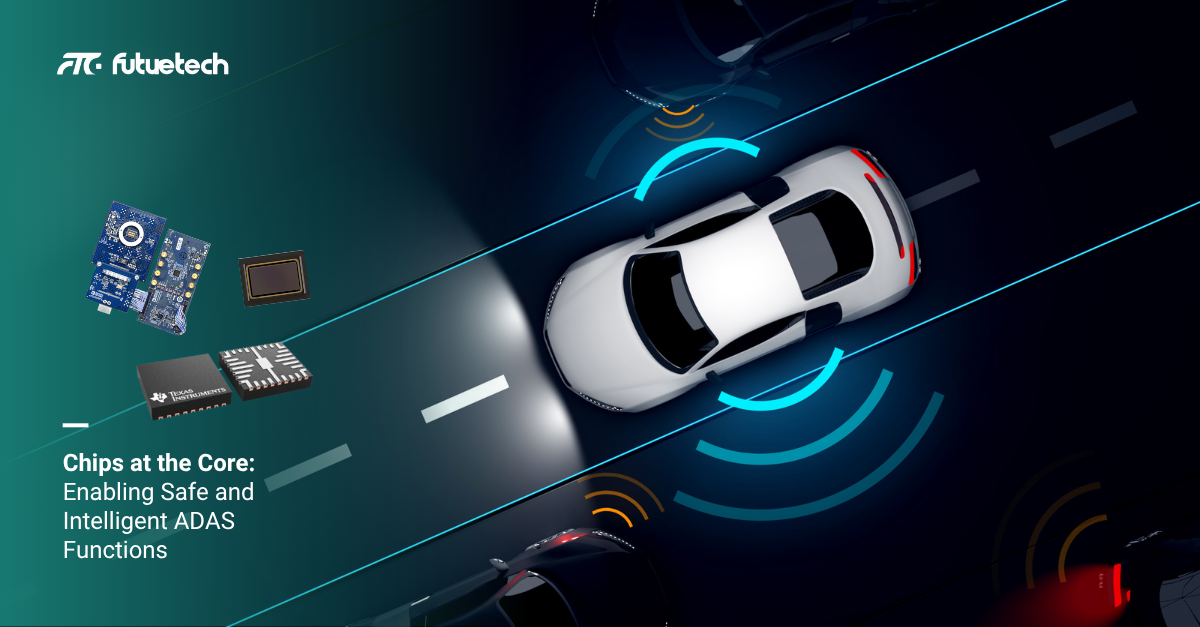In recent years, with the rapid advancement of intelligent driving technologies, ADAS (Advanced Driver Assistance Systems) has become a vital component of modern vehicles. As the core enabler of ADAS functionality, automotive electronic chips play a critical role in enhancing driving safety and comfort. This article provides an overview of the fundamental knowledge, key technologies, and development trends related to ADAS chips.
What Is ADAS?
ADAS (Advanced Driver Assistance Systems) refers to a set of systems that assist drivers by integrating various sensors and control units. Key functions include lane keeping, automatic emergency braking, adaptive cruise control, and blind spot monitoring, all designed to enhance driving safety and reduce traffic accidents. Currently, ADAS technologies are primarily implemented in Level 2 and Level 2+ autonomous driving systems, and are expected to evolve towards higher levels of autonomy in the future.
Key Types of Chips in ADAS Systems
The implementation of ADAS systems relies on various types of chips, mainly including the following categories:
1. Sensor Chips
These chips capture environmental data around the vehicle, including:
Camera Image Sensors (CIS): Capture visible light images for identifying lanes, traffic signs, pedestrians, etc.
Typical Models: Sony IMX490, Omnivision OX03C10
Millimeter-Wave Radar Chips: Use electromagnetic waves to detect object distance and speed, suitable for all-weather conditions.
Typical Models: TI AWR2944, NXP TEF82xx
LiDAR Chips: Use laser scanning to obtain high-precision 3D environmental data.
Typical Models: Velodyne VLS-128, Analog Devices AD-FMCLIDAR1-EBZ
Ultrasonic Radar Chips: Detect close-range obstacles, commonly used in parking assist systems.
Typical Model: Infineon TLE4998C4 (for ultrasonic signal conditioning)
2. Perception Processing Chips
These chips process and analyze sensor data, including:
Image Signal Processors (ISP): Preprocess images captured by cameras, such as noise reduction and enhancement.
Typical Models: Ambarella CV25/CV2
AI Accelerators: Accelerate deep learning algorithms for object detection and classification.
Typical Model: Mobileye EyeQ5
3. Control and Decision-Making Chips
These chips integrate perception data and make driving decisions, including:
Central Processing Units (CPU): Execute system control and decision logic.
Graphics Processing Units (GPU): Handle complex image and video processing.
Domain Controller Chips: Integrate multiple functional modules for efficient data processing and decision-making.
Typical Models: NXP S32G3, Renesas R-Car V4H
Leading ADAS Chip Manufacturers
Several semiconductor manufacturers currently provide solutions in the ADAS domain:
Renesas Electronics: Offers high-performance, low-power SoCs that support data processing from multiple sensors.
Ambarella: Its CV series chips feature integrated computer vision engines, suitable for various ADAS applications.
NXP Semiconductors: Provides comprehensive ADAS solutions, including sensor interfaces and data processing chips.
Mobileye (an Intel subsidiary): Its EyeQ series chips are widely used in ADAS systems, supporting functions from Level 2 to Level 5 autonomous driving.
Qualcomm: Its Snapdragon Ride platform offers high-performance ADAS and autonomous driving solutions with AI and machine learning capabilities. (Source: Dataintelo)
NVIDIA: Its DRIVE platform is widely applied in autonomous and ADAS systems, offering powerful AI and deep learning capabilities. (Source: Dataintelo)
Development Trends and Challenges
As technology advances, ADAS chips are facing the following development trends and challenges:
Integration: Combining multiple functional modules into a single chip to enhance system efficiency and reduce costs.
High-Performance Computing: Meeting the real-time processing demands of large volumes of sensor data and supporting more complex algorithms.
Functional Safety: Ensuring safe operation in the event of system failure, in compliance with standards such as ISO 26262.
Low Power Consumption: Reducing energy use while maintaining performance, to extend system longevity.
Global Collaboration and Competition: With open global markets, chip manufacturers must continually innovate amid cooperation and competition to meet regional demands.
As autonomous driving technology continues to evolve, ADAS chips will play an increasingly crucial role in enhancing driving safety and enabling higher levels of autonomy. In the future, with further advancements in AI and semiconductor technologies, ADAS chips will achieve higher levels of integration and intelligence, laying a solid foundation for the realization of smart mobility.
Empowering Safer and Smarter Mobility with Futuretech Components
As a professional authorized distributor of electronic components, Futuretech Components is committed to delivering high-quality, traceable original chips and supply chain solutions for customers in the automotive electronics, industrial control, and telecommunications sectors.
We distribute products from leading brands such as NXP, TI, Renesas, Omnivision, and Infineon, widely used in perception, control, and computing modules of ADAS systems.
Whether you're an OEM, Tier 1 supplier, or solution provider, Futuretech offers:
Strict automotive-grade chip selection
Fast delivery and multi-location inventory support
Long-term supply assurance and BOM matching services
Let’s drive the new era of safer and smarter mobility together!


